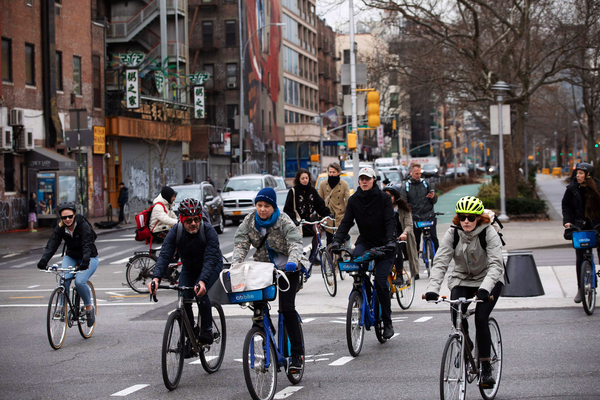Notes from India

I've been spending this week in India as part of the Justworks Leaders' Fellowship, a leadership development program for select mid-career managers at Justworks. Our week in India (and last year, in Ghana) gives fellows an opportunity to develop more context for the world in which we lead and conduct business.
India has experienced a population explosion in the past decades, recently becoming the world's most populous country. Roughly speaking, they have four times the U.S. population in one quarter the space: 16x the population density. The implications are significant and have created substantial challenges for the country.
Challenges in education and the workforce
The education system hasn't kept up with population growth. While there are over 1,000 universities in the country, the education quality in all but the most renowned institutions is questionable. Importantly, most university graduates do not earn more than their non-graduate counterparts despite the 3-4 year opportunity cost of studying, rather than working. This discourages many young people from even applying. There is a broad movement to "up-skill" the workforce—for example, training EV battery repair technicians. These programs are focused on near-term skills development, giving the sense of a band-aid approach and threatening the long-term viability of the workforce as skill requirements rapidly evolve in the coming decades.
The vast majority of the workforce, perhaps 80%, is engaged in "informal" employment. Think part-time jobs, cash payments, no labor regulations, social security, pension, or insurance. (Sound familiar?) This has led to a substantial divide between the formal employment construct and what is actually happening. Efforts to further formalize employment are frustrated by economic forces. For example, businesses with ten or more employees must provide six months' paid leave to new mothers. On paper, this is substantially more generous than the U.S., which requires only 12 weeks' unpaid leave at the federal level. In reality, companies are reluctant to hire women, especially those of childbearing age, contributing to massive gender inequality in the workforce. Gender discrimination is illegal but not widely enforced.
Much of India's economic growth since the 1980s has been fueled by burgeoning service exports: IT outsourcing, business process outsourcing, call centers, etc. Because of the inconsistency in university education, companies like Infosys train their employees in software development through a 4-6 month residential program, supplementing the higher education system. These jobs, of course, are the most vulnerable to emerging AI capabilities: First-level customer support and junior programming jobs are the first to be replaced. A similar phenomenon is happening in factories which are rapidly automating. While every technology wave has eliminated one set of jobs while creating another, the disruption in the near-term—especially to those who are older and have already developed a specific skillset—can't be understated. History has demonstrated that widespread unemployment—already a challenge in India—is not a good thing.
These challenges are not unique to India. They rhyme with many of our challenges at home in the U.S.: The cost of university education has skyrocketed and the economic benefits to the new graduate, saddled with debt, is often unclear. Informality pervades the American labor force, too—highlighted most recently by the chilling effect of the administration's immigration enforcement policy on the agriculture and hospitality sectors. Many jobs are under threat not just from offshoring (which tariffs are intended to mitigate, at least in theory) but also from automation and AI. Our demographics are different but many other forces are not.
Leapfrogging in telecom, payments and solar
Despite its challenges, India has leapfrogged the rest of the world in several dimensions. First, the country has installed nearly universal cell phone coverage. Even the most remote villages can get a cell signal and nearly everyone has a cell phone. Second, the country has made bank accounts universally available at no cost—notably to women, who historically did not often have their own bank accounts.
The combination of universal cell coverage and bank accounts has led to a technology called UPI—conceptually similar to Venmo. While India is not cashless, it's getting there fast. Like roads and highways, smooth payment rails reduce friction in economic activity and lead to growth. Centralized control of this technology, of course, also gives the government more control over the lives of everyday citizens. Concepts like "tax collection" fade into the background when taxes can be levied at the transaction level—something that is rumored to come in the near future and has sparked public concern.
India has also been making substantial investments in its solar power capacity, reducing its dependence on fossil fuels as well as carbon emissions. Solar power is often cheaper than grid power, a significant force in driving adoption. Rooftop solar panels are a common sight.
Choosing the society we want
While India and the U.S. are quite different, we share a global context and many of the same challenges. Technologies like AI, automation, social media, and digital payments are growing and have demonstrated their ability to "cut both ways."
I keep coming back to the same questions: What kind of society do we want to live in? What is the balance between individual liberty and community well-being? Growth and inequality? Who are education, healthcare, childcare and jobs actually for?
While everyone might have a slightly different answer to these questions, I think our big challenge as a society in the coming years is to develop a shared view, come to grips with what is really happening in our world and our communities every day, and develop policies and systems that move us towards it.
Today, we are not on track to develop a consensus on the society we want. Without this, we are lost. I'm hopeful that our next generation of public leaders will help us find our way.



